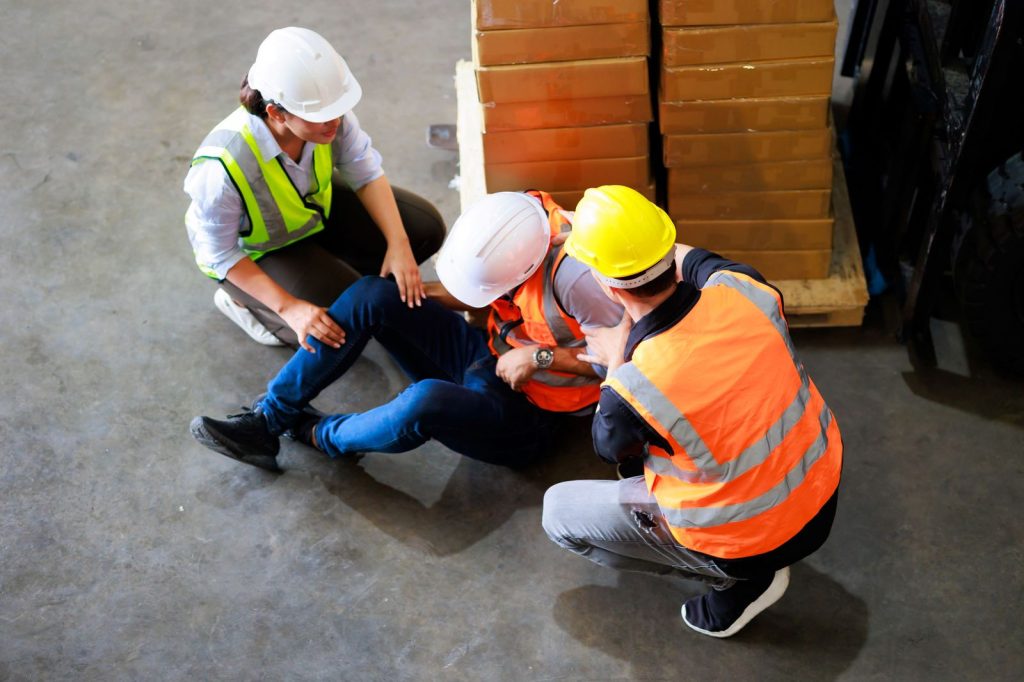5 Common Safety Hazards Present in Warehouse Operations

Any warehouse is a complex system of moving parts. This working space is no stranger to hazards and high risks of things going awry. When people, machines, and deadlines come together in one space, hazards are bound to arise. According to OSHA, warehouses are one of the most hazardous places to work, with a fatality rate that is above the national average.
This article will review five common safety hazards in the warehouse industry, backed up by safety facts that help drive home just how dangerous they can be to the health of employees. Discussing hazards without offering solutions is no good, thus this article will also provide operational recommendations related to each hazard. Let’s dive right in.
Forklifts
Forklifts are one of the greatest hazards in the warehousing industry. Studies show that each year 20,000 employees are seriously injured in warehouse forklift-related accidents. An estimated one hundred employees are killed by forklift-related accidents each year, 25% of these fatalities caused specifically by the forklift overturning. The root cause of a good amount of these injuries can be traced back to proper employee training. OSHA found 70% of workplace accidents can be avoided through proper training and safety procedures. Any company with a warehousing component should be sure to focus adequate time on safety and training for forklift operation.
Slips & Falls
Forklifts are a top hazard for warehouse operations, but slips & falls are a close second. Warehouse slip & fall accidents make up 15% of all accidental deaths, 25% of all injury claims, and an astounding 95 million lost work days each year. Slips & falls are 100% preventable with proper risk management techniques. Repairing walkways, adding non-slip matting, making cleanliness a mantra, and providing consistent employee training will help lower the risks of slips & falls that take employees off the floor and away from helping the company meet objectives.
Docks
Docks are one area of a warehousing operation that deserves heavy attention from a safety standpoint. 25% of all reported warehouse injuries occur on loading docks and this does not include near misses which happen with even more frequency. An average loading dock is 44 – 48 inches in height, any slip or fall from a loading dock has a high probability of serious injury. Forklifts are also a major hazard around loading docks as they can overturn resulting in employee fatalities. Installing barriers is one of the main ways warehouses can mitigate loading dock incidents. Visual barriers (e.g. bright color floor paint), safety guardrails, or fall protection barriers should be present at each loading dock to ensure employees are safe while loading and unloading cargo.
Hazardous Materials
Warehouse operations can also be seen as synonymous with hazardous materials, it just comes with the territory. Hazardous materials can be anything from flammable liquids to radioactive materials, basically, anything that can cause physical harm to an employee. These materials must be handled with care and respected at all times, as severe injuries can result from improper handling. To keep employees safe around hazardous materials it is crucial to follow government regulations (e.g. OSHA, EPA) on proper storage of these materials. For example, forklifts should not be at risk of connecting with any hazardous materials during normal operations, as this could lead to catastrophic consequences. Following the letter of the law on hazardous materials storage is the best way businesses can keep their warehouse employees safe from harm.
Repetitive Motion
Most warehouse injuries are attached to a sudden, accidental event like a forklift accident. However, there is another warehouse hazard that can have more long-term build up before an injury event is triggered. Repetitive motions can wear down employees over time, leading to reduced range of motion and lower back and neck pain. If any warehouse operation is experiencing an uptick in injuries linked to repetitive motion a root cause analysis should be initiated. A root cause analysis from ergonomic experts like Work-Fit, will allow safety staff to focus their efforts in the right direction. Work-Fit’s experts also specialize in coaching the biomechanics of entering and exiting fork trucks, coaching microbreaks to reduce the stressors of seated posture, and providing strategies to improve neck and trunk range of motion needed for driving backward and crossing intersections. These are all keys to reducing repetitive motion injuries in warehousing.
Injured employees cannot help the company meet goals. By keeping a close eye on repetitive motion injuries businesses can be proactive in decreasing business interruptions related to injured employee absenteeism.
Wrapping Up
Keeping employees safe is the number one priority for any organization, and businesses with warehouse operations have a constant challenge in a hazardous work environment. Companies have to accept this risk to meet objectives, but there are important ways to decrease the frequency and severity of employee injuries in warehousing operations. Work-Fit provides companies with proper safety procedures, employee training, biomechanics coaching and self-care tools that ensure employees leave the warehouse the same way they came in– healthy and happy. Contact us today to learn what we can do for you!



